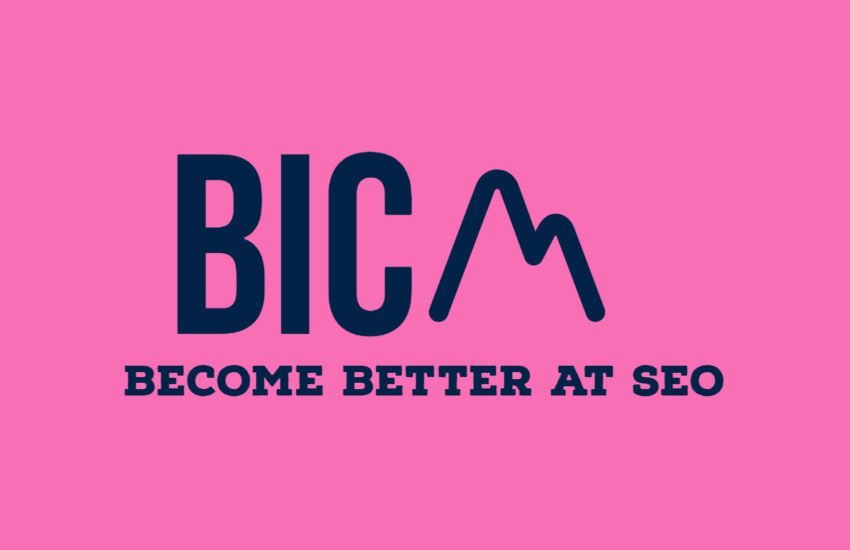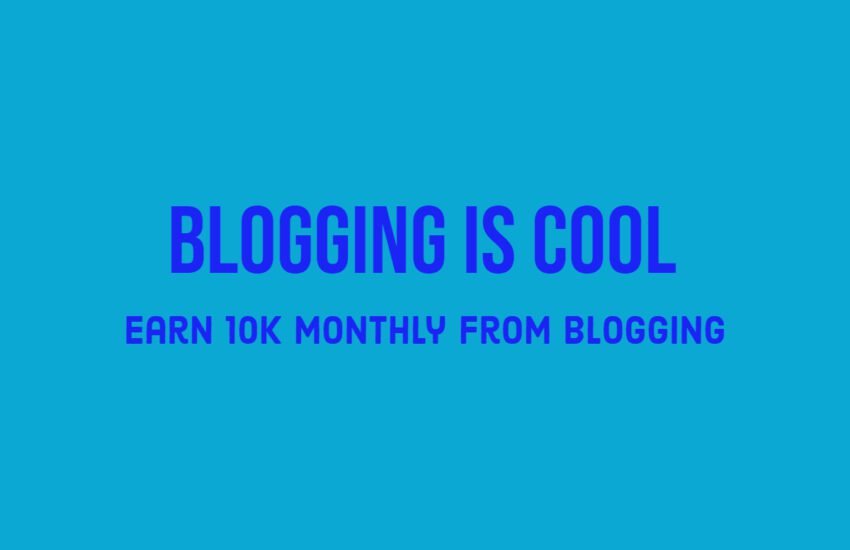How to Create a Free Blog on Google
Are you looking to create a free blog? Google offers a user-friendly platform that allows you to share your thoughts, ideas, and experiences with the world.
- Step by Step Guide to Creating Free Blog
- Frequently Asked Questions
- 1. What is Google’s platform for creating free blogs?
- 2. How do I get started with creating a free blog on Google’s Blogger platform?
- 3. What customization options are available for free blogs on Google’s Blogger platform?
- 4. Can I use my own domain name with a free blog on Google’s Blogger platform?
- 5. How do I create and publish posts on my free blog on Google’s Blogger platform?
- 6. Can I monetize my free blog on Google’s Blogger platform?
- 7. How can I track and analyze traffic on my free blog on Google’s Blogger platform?
- 8. Is there a mobile app available for managing my free blog on Google’s Blogger platform?
- 9. Can I collaborate with other users on my free blog on Google’s Blogger platform?
- 10. Is there customer support available for users of Google’s Blogger platform?
- 11. Can I integrate third-party tools and services with my free blog on Google’s Blogger platform?
- 12. Is there a limit to the amount of content I can publish on my free blog on Google’s Blogger platform?
- 13. Can I schedule posts to be published at a later date on my free blog on Google’s Blogger platform?
- 14. Does Google’s Blogger platform offer built-in SEO features to help improve search engine visibility?
- 15. Can I back up my free blog on Google’s Blogger platform?
- 16. Can I switch to a different blogging platform if I decide to migrate from Google’s Blogger platform in the future?
- 17. Can I customize the appearance and layout of my free blog on Google’s Blogger platform using HTML and CSS?
- 18. Can I create multiple blogs under the same Google account on Google’s Blogger platform?
- 19. Can I enable comments on my free blog on Google’s Blogger platform?
- 20. Are there any limitations or restrictions for free blogs on Google’s Blogger platform?
Step by Step Guide to Creating Free Blog
In this step-by-step guide, we will walk you through the process of creating a free blog on Google.
Step 1: Sign in to Google
The first step is to sign in to your Google account. If you don’t have one, you can easily create a new account by clicking on the “Create account” option.
Step 2: Go to Blogger
Once you are signed in, go to the Google homepage and click on the “Apps” button in the top-right corner. From the drop-down menu, select “More” and then click on “Blogger”.
Step 3: Create a New Blog
On the Blogger homepage, click on the “Create New Blog” button. You will be prompted to choose a title for your blog and a unique URL address. Make sure to choose a title and URL that reflect the content and purpose of your blog.
Step 4: Customize Your Blog
After creating your blog, you can customize its appearance by selecting a template from the available options. You can also customize the layout, fonts, and colors to match your personal style.
Step 5: Start Writing
Once you have customized your blog, you are ready to start writing. Click on the “New Post” button to create your first blog post. Give your post a title and start writing your content in the provided editor. You can format your text, add images, and include links to enhance your blog post.
Step 6: Publish Your Blog Post
When you are finished writing your blog post, click on the “Publish” button to make it live on your blog. You can also save your post as a draft if you want to continue working on it later.
Step 7: Promote Your Blog
Now that your blog is live, it’s time to promote it. Share your blog posts on social media platforms like Facebook, Twitter, and Instagram. Engage with your readers by responding to comments and encouraging them to share your content with others.
Step 8: Monitor Your Blog’s Performance
Google provides analytics tools that allow you to monitor your blog’s performance. You can track the number of visitors, page views, and engagement metrics. Use this data to gain insights into your audience and make informed decisions to improve your blog.
Step 9: Keep Updating Your Blog
A successful blog requires regular updates. Keep your readers engaged by posting new content on a consistent basis. Experiment with different topics and formats to keep your blog fresh and interesting.
Step 10: Connect with the Blogging Community
Lastly, connect with the blogging community to gain inspiration, learn new tips and tricks, and build relationships with fellow bloggers. Join blogging forums, participate in blogging challenges, and attend blogging conferences to expand your network and grow as a blogger.
Creating a free blog on Google is a simple and rewarding process. Follow these step-by-step instructions and start sharing your voice with the world today!
Frequently Asked Questions
1. What is Google’s platform for creating free blogs?
Google’s platform for creating free blogs is called “Blogger.” Blogger is a user-friendly and intuitive blogging platform that allows users to create and publish blogs without any cost. It offers a range of customizable templates and features, making it suitable for both beginners and experienced bloggers.
2. How do I get started with creating a free blog on Google’s Blogger platform?
To get started with creating a free blog on Blogger, simply visit the Blogger website (blogger.com) and sign in using your Google account. If you don’t have a Google account, you can create one for free. Once logged in, click on the “Create Your Blog” button to begin the setup process.
3. What customization options are available for free blogs on Google’s Blogger platform?
Blogger offers various customization options for free blogs, including customizable templates, layout options, and color schemes. Users can easily personalize their blog’s appearance by selecting a template and modifying elements such as headers, fonts, and backgrounds. Additionally, Blogger allows users to add custom widgets, gadgets, and HTML/CSS code to further customize their blogs according to their preferences.
4. Can I use my own domain name with a free blog on Google’s Blogger platform?
Yes, users have the option to use a custom domain name with their free blog on Blogger. Blogger provides instructions for linking a custom domain name purchased from a domain registrar to your Blogger blog. This allows you to create a professional-looking web address (e.g., www.yourblogname.com) for your blog at no additional cost.
5. How do I create and publish posts on my free blog on Google’s Blogger platform?
Creating and publishing posts on your Blogger blog is straightforward. Simply log in to your Blogger dashboard, click on the “New Post” button, and start writing your content using the built-in editor. You can add text, images, videos, and other media to your posts, as well as format them using various styling options. Once you’re satisfied with your post, click on the “Publish” button to make it live on your blog.
6. Can I monetize my free blog on Google’s Blogger platform?
Yes, you can monetize your free blog on Blogger through various methods, including displaying ads, affiliate marketing, sponsored content, and selling products or services. Blogger allows users to integrate Google AdSense, Google’s advertising program, to display ads on their blogs and earn revenue based on clicks and impressions.
7. How can I track and analyze traffic on my free blog on Google’s Blogger platform?
Blogger provides built-in analytics tools that allow you to track and analyze traffic on your blog. Simply log in to your Blogger dashboard and navigate to the “Stats” tab to view metrics such as page views, traffic sources, and audience demographics. Additionally, you can integrate Google Analytics, a more advanced analytics platform, with your Blogger blog to gain deeper insights into your audience and traffic patterns.
8. Is there a mobile app available for managing my free blog on Google’s Blogger platform?
Yes, Google offers a mobile app called “Blogger” that allows users to manage their blogs on the go. The Blogger app is available for both Android and iOS devices and provides essential features for creating, editing, and publishing posts, as well as managing comments and monitoring blog activity.
9. Can I collaborate with other users on my free blog on Google’s Blogger platform?
Yes, Blogger allows users to collaborate with other users by adding them as authors or administrators to their blogs. You can invite other users to contribute content, manage settings, and moderate comments on your blog by sending them invitation emails through the Blogger dashboard.
10. Is there customer support available for users of Google’s Blogger platform?
While Blogger does not offer dedicated customer support, users can access help resources and community forums for assistance with any questions or issues they may encounter. The Blogger Help Center provides comprehensive documentation, tutorials, and troubleshooting guides to help users navigate the platform and troubleshoot common problems. Additionally, users can seek help from the vibrant Blogger community by participating in forums and discussions or reaching out to experienced users for advice and support.
11. Can I integrate third-party tools and services with my free blog on Google’s Blogger platform?
Yes, Blogger allows users to integrate third-party tools and services with their blogs to enhance functionality and customize their websites. Users can add custom HTML/CSS code, embed widgets and gadgets, and integrate external services such as social media sharing buttons, email subscription forms, and analytics tracking scripts. Additionally, Blogger supports integration with Google products like Google Analytics, Google AdSense, and Google Maps, enabling users to leverage these tools to optimize their blogs and enhance the user experience.
12. Is there a limit to the amount of content I can publish on my free blog on Google’s Blogger platform?
There is no strict limit to the amount of content you can publish on your free blog on Blogger. However, it’s essential to keep in mind that large amounts of content may impact your blog’s performance and load times. To ensure optimal performance, consider organizing your content into categories, using pagination or archives for older posts, and optimizing images and media files for faster loading times. Additionally, regularly reviewing and updating outdated or irrelevant content can help keep your blog fresh and engaging for your audience.
13. Can I schedule posts to be published at a later date on my free blog on Google’s Blogger platform?
Yes, Blogger allows users to schedule posts to be published at a later date and time. When creating or editing a post, simply click on the “Post Options” menu, then select the desired date and time under the “Scheduled” section. Once scheduled, the post will automatically be published on your blog at the specified date and time. Scheduling posts in advance can help you maintain a consistent posting schedule and ensure that your content is published at optimal times for your audience.
14. Does Google’s Blogger platform offer built-in SEO features to help improve search engine visibility?
Yes, Blogger provides built-in SEO features to help improve the search engine visibility of your blog. Users can customize meta tags, titles, and descriptions for individual posts and pages to optimize them for search engines. Additionally, Blogger automatically generates a sitemap.xml file for your blog, which helps search engines crawl and index your content more efficiently. Users can also enable search preferences settings to control how their blog appears in search results and customize permalinks for better readability and SEO. By leveraging these built-in SEO features, users can increase their blog’s visibility and attract more organic traffic from search engines.
15. Can I back up my free blog on Google’s Blogger platform?
Yes, users can back up their free blogs on Blogger to safeguard their content and data. To back up your blog, log in to your Blogger dashboard, navigate to the “Settings” tab, and click on the “Other” section. Under the “Blog tools” heading, you’ll find the option to “Export blog.” Clicking on this option will allow you to download a backup of your blog in XML format, which includes all your posts, pages, comments, and settings. It’s recommended to regularly back up your blog to prevent data loss and ensure that you have a copy of your content in case of any unexpected issues or disruptions.
16. Can I switch to a different blogging platform if I decide to migrate from Google’s Blogger platform in the future?
Yes, users have the flexibility to switch to a different blogging platform if they decide to migrate from Blogger in the future. Blogger allows users to export their blog content in XML format, which can then be imported into most other blogging platforms, including WordPress, Medium, Tumblr, and Squarespace. While the process may vary depending on the platform you’re migrating to, most blogging platforms offer tools and resources to help users import their content seamlessly. Before making the switch, it’s essential to research and evaluate alternative platforms to ensure they meet your needs and requirements.
17. Can I customize the appearance and layout of my free blog on Google’s Blogger platform using HTML and CSS?
Yes, Blogger allows users to customize the appearance and layout of their blogs using HTML and CSS. Users can access the “Theme” section in the Blogger dashboard to customize their blog’s design and layout. From there, they can edit the HTML/CSS code of their blog’s template to make customizations such as changing fonts, colors, backgrounds, and layout elements. Additionally, users can add custom widgets, gadgets, and scripts to further personalize their blogs and enhance functionality. By leveraging HTML and CSS customization options, users can create unique and visually appealing designs for their blogs that reflect their branding and style preferences.
18. Can I create multiple blogs under the same Google account on Google’s Blogger platform?
Yes, users can create multiple blogs under the same Google account on Blogger. Each blog is treated as a separate entity with its own unique URL, design, and content. To create a new blog, simply log in to your Blogger dashboard, click on the “Create a blog” button, and follow the prompts to set up your new blog. You can manage all your blogs from the same Blogger dashboard, making it easy to switch between them and access their settings, posts, and analytics. Creating multiple blogs can be useful for users who want to cover different topics or target distinct audiences with separate blogs.
19. Can I enable comments on my free blog on Google’s Blogger platform?
Yes, Blogger allows users to enable comments on their blogs to facilitate engagement and interaction with their audience. Users can choose to enable comments for individual posts or pages and customize comment settings, such as moderation, spam filtering, and display options. Enabling comments encourages readers to share their thoughts, feedback, and questions, fostering a sense of community and dialogue around your blog content. Additionally, responding to comments and engaging with your audience can help build relationships, increase retention, and encourage repeat visits to your blog.
20. Are there any limitations or restrictions for free blogs on Google’s Blogger platform?
While Google’s Blogger platform offers many features and customization options for free blogs, there are some limitations and restrictions to be aware of. For example, free blogs on Blogger are hosted on Google’s servers, which means users have limited control over server configurations and backend infrastructure. Additionally, free blogs may display ads served by Google AdSense, over which users have limited control. Furthermore, Google reserves the right to enforce its content policies and terms of service, which prohibit certain types of content and behavior. It’s essential to review and comply with Google’s policies and guidelines to ensure that your blog remains in good standing and compliant with the platform’s terms of service.


